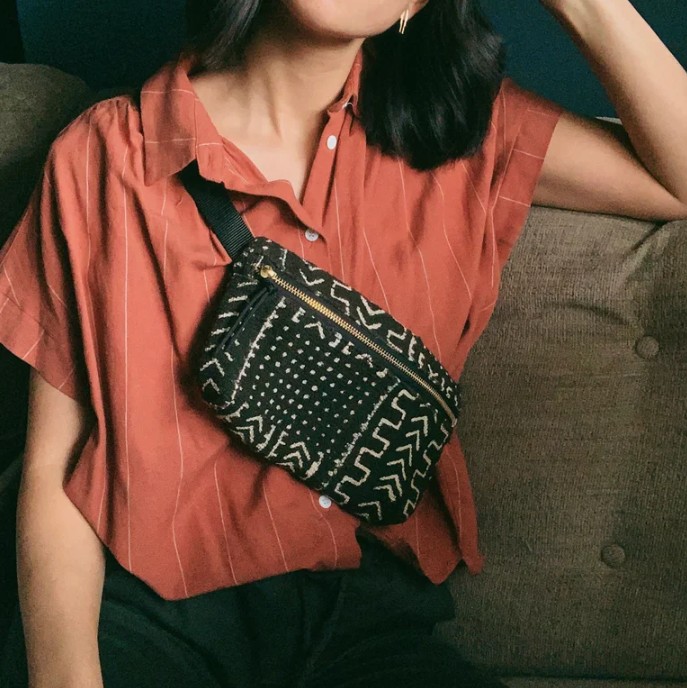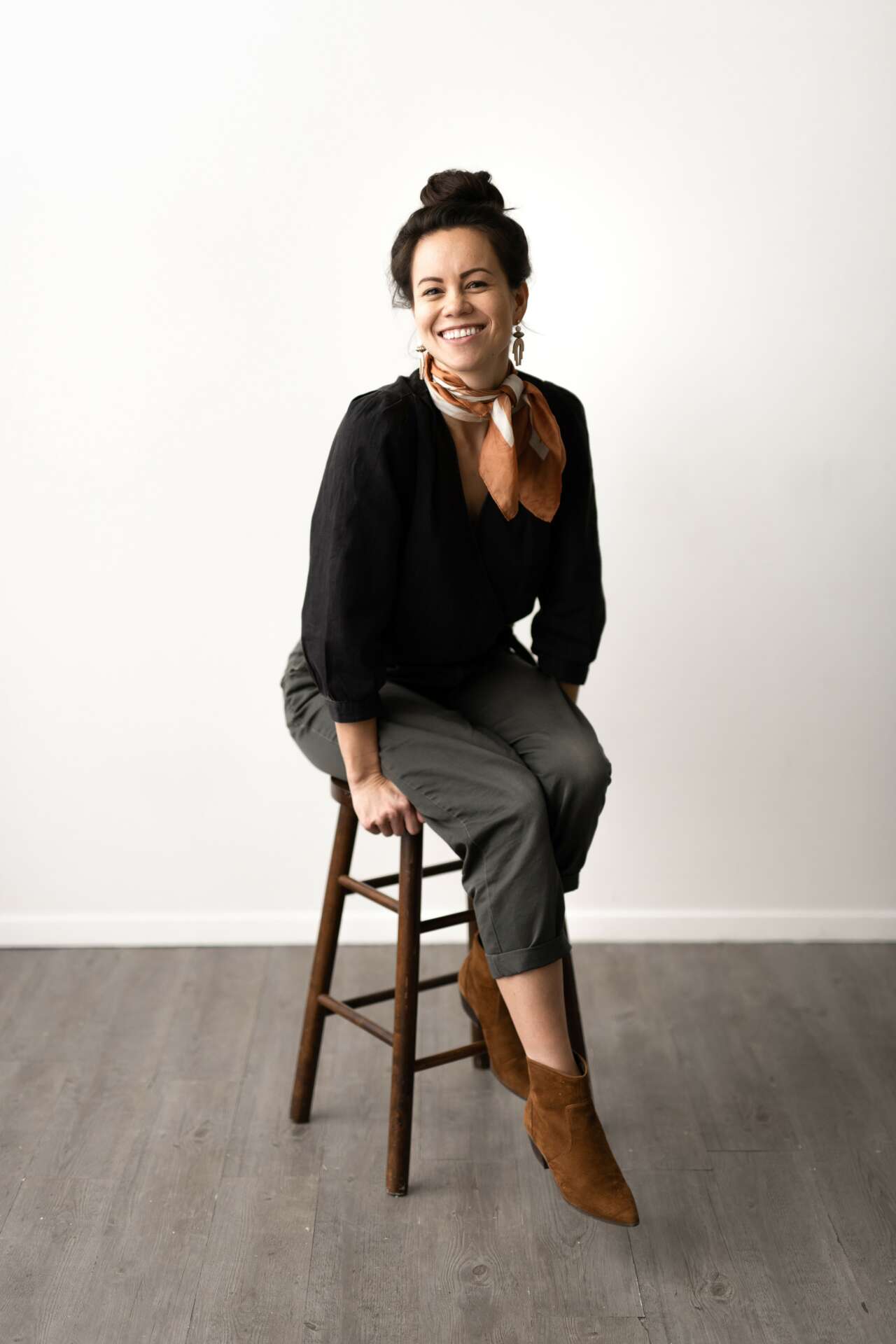We recently connected with Sarah Black and have shared our conversation below.
Alright, Sarah thanks for taking the time to share your stories and insights with us today. Being a business owner can be really hard sometimes. It’s rewarding, but most business owners we’ve spoken sometimes think about what it would have been like to have had a regular job instead. Have you ever wondered that yourself? Maybe you can talk to us about a time when you felt this way?
What’s great about being a business owner is that I can control how much I work and when I work. I actually took on a full-time job about 4 months ago because of personal/family circumstances. I got a degree in Advertising, but when I left that field to start my business, it was my degree experience that gave me the confidence to be an entrepreneur. Then it was because of my 10 years of being an entrepreneur and taking on new opportunities and clients that I got a job as a Product Development Engineer! And it’s honestly been really nice not being in charge. I’m still learning new things everyday about design, production, and management – processes I’ve been doing on a small scale – and seeing how it affects a larger company. Even though I’m not promoting many products on my own website at the moment, I’m still receiving wholesale orders and still feel fulfilled in my own business. Having my own business provides so much flexibility to accommodate the ebb and flow of life and a large array of marketable skills in several areas.



Sarah, before we move on to more of these sorts of questions, can you take some time to bring our readers up to speed on you and what you do?
I’m a self-taught seamstress with an advertising degree. I tried corporate marketing for a couple of years, but after going on a humanitarian trip to Uganda for 3 months, I realized that I wanted to use my skills for the greater good. I launched my business in 2014 and right away, I connected with local refugee organizations to give employment to refugee seamstresses.
Since then I’ve traveled to India and Peru to teach women how to sew, held service workshops to make bags and hygiene kits for a homeless shelter, and donated thousands of dollars to refugee resettlement organizations in Salt Lake City, greater Texas areas, and other marginalized communities all over the world.
I started out designing and sewing all types of bags out of leather and upholstery fabric. I then used the scrap leather from bags and secondhand jewelry pieces to create one-of-a-kind earrings. 2020’s pandemic required me replace my products with face masks and provided 10 women with part-time jobs to keep up with the demand. As things progressed, leftover fabric has turned into clothing and home decor pieces. So now my products are made from materials from as far as India to as close as a local thrift shop.
On the side, I’ve taken on clients to create prototypes and small batch orders for their new product ideas. I’ve also had the chance to be a contracted seamstress for an industrial design firm in Salt Lake City, Utah.
Also, I’ve taught sewing classes in my own studio space as well as for the University of Utah’s Continuing Education program for 3 years.
I’ve pretty much said YES to opportunities that I feel like would challenge me in a new aspect of sewing, get outside of my comfort zone, and introduce me to new perspectives of design. I believe that my self-taught/”can-do” attitude has allowed me to be versatile and to have a trustworthy work quality.



Can you talk to us about how your funded your business?
When I decided to quit my marketing job to focus on my own business, I wanted to launch a crowdfunding campaign to gain capital and create buzz on social media. I created a Kickstarter campaign, but about a week after I launched, a mentor helped me realize that my fundraising goal was going to be difficult to achieve after seeing how little I earned in just 1 week. I ended the campaign and relaunched on Indiegogo. The benefits of Indiegogo was that I would still receive my funds, whether I hit my goal or not. Kickstarter only transfers your earnings if you hit your goal.
What made my campaign unique was that I was going to work with local refugee employment organizations to identify and train refugees to help me manufacture my products for my supporters, and my funds would help me provide resources and classes to the community. One of the tier rewards supporters could choose was a private sewing class for 8 people. This was a great way to make connections in the community and gain trust with my customers. It seemed as though backers really liked to support a greater cause than just bags.
I also had the help of intentional bloggers who shared my campaign and I was able to book a TV spot with a local morning news station to promote my campaign and cause.
So after the second launch and more strategic planning, I hit my new, more realistic, fundraising goal within 30 days and was able to rent out a small workspace to start production of my bag collection and starting working with refugees in the Salt Lake City community!


How’d you think through whether to sell directly on your own site or through a platform like Amazon, Etsy, Cratejoy, etc.
I currently sell my products B2C on Big Cartel. It’s an Ecommerce site similar to Squarespace and Shopify, but more affordable and with a greater focus on individual makers. They don’t charge for their templates, only a monthly fee for the use of their platform. Their highest tier is only $19.99/month for unlimited product listings, 5 photos for each product, and with several integrations available to streamline processes.
However, with my recent shift in focus, and limited time, my main source of sales for my business is through Faire, a platform for drop-ship B2B wholesale orders. I can upload my own photos, create descriptions, edit my maker’s profile, and Faire does all of the marketing to generate retailer leads. I do have the option to create promotions for current retailers or anyone who visits my brand page.
Based on my products and current processes, my time/pay ratio of fulfilling orders through Faire is equal to or better than selling my products on my own platform. With each new collection I sell on my own platform, I have to account for my time creating the design, sewing, planning and making social media posts, reels, website photos, product descriptions, email blast, and individual packing. I try to maintain competitive pricing, but usually customers are waiting for a discount code to use on their orders.
So when all of those factors are weighed against just having to sew and ship orders for retailers, it’s more time efficient to focus on wholesale orders with my limited time and careful handmade process.
My products are currently in over 20 shops in the US and Canada, and I have consistent inventory in 2 consignment shops that do a payout once a month.
Contact Info:
- Website: www.choosemade.com
- Instagram: www.instagram.com/choosemade
- Facebook: https://www.facebook.com/choosemadepa
- Linkedin: https://www.linkedin.com/in/sarah-black-10517b26/
- Other: www.tiktok.com/choosemade
Image Credits
Elisha Braithwaite Karl Ward Jacq Quinton


